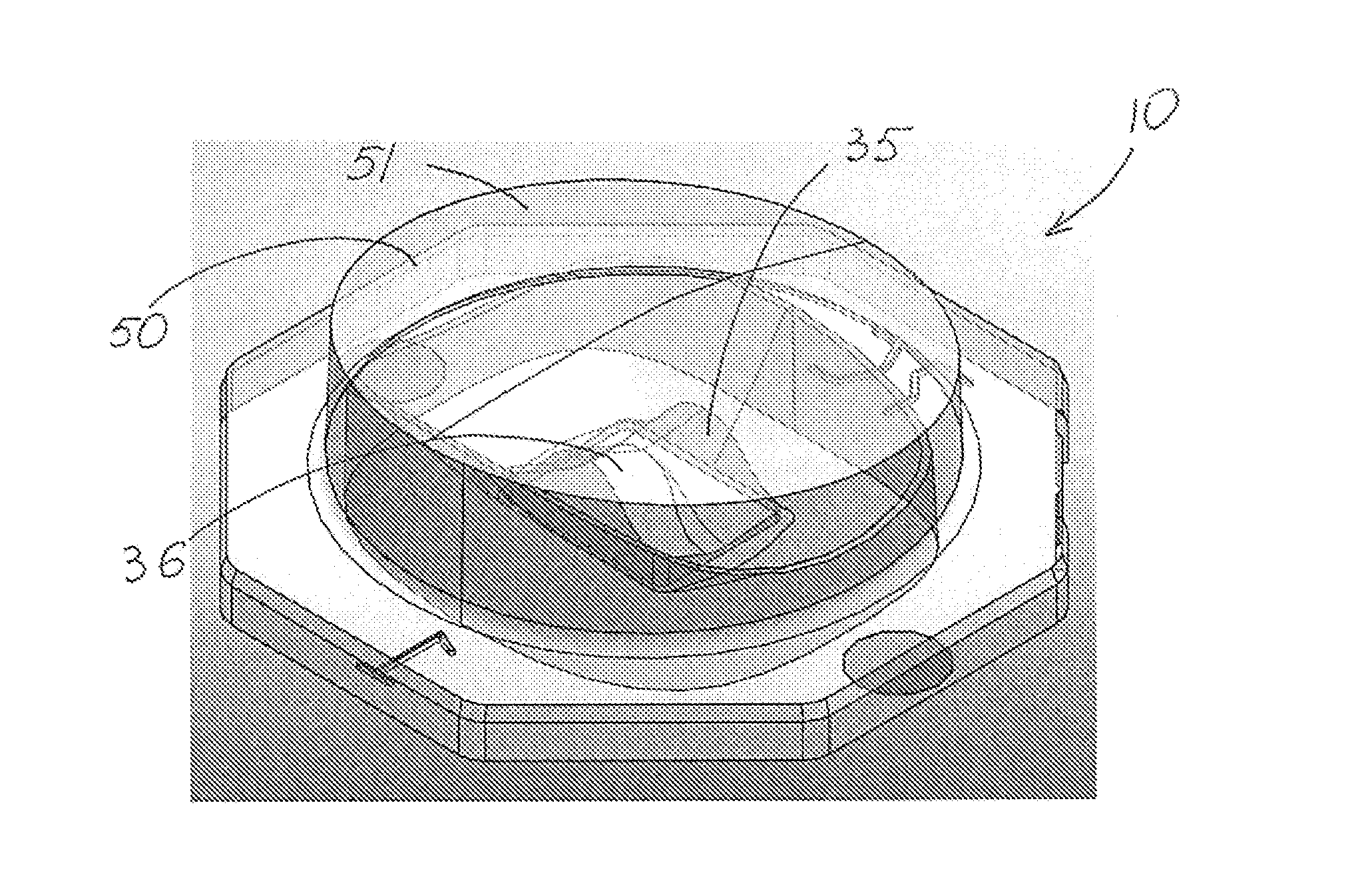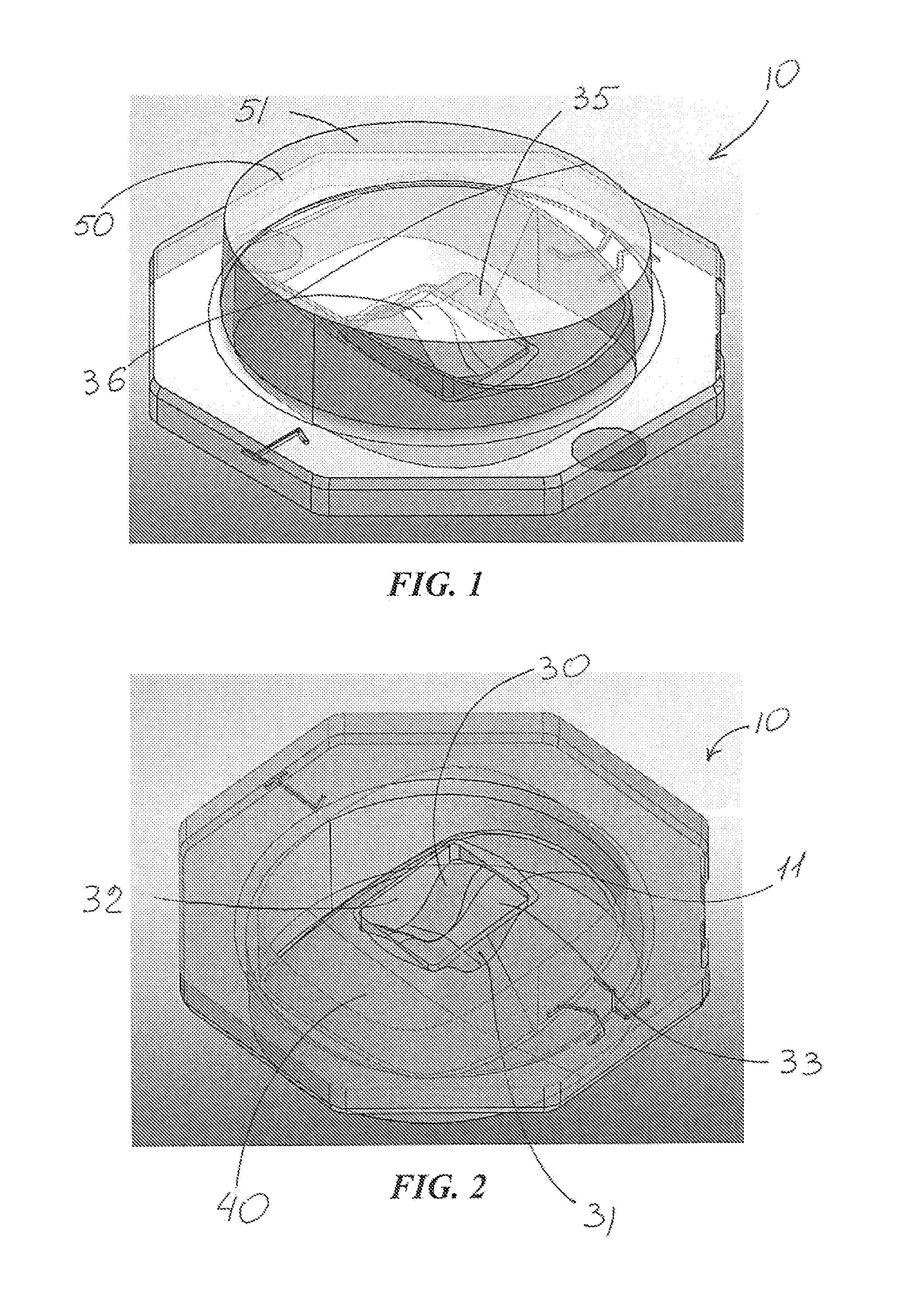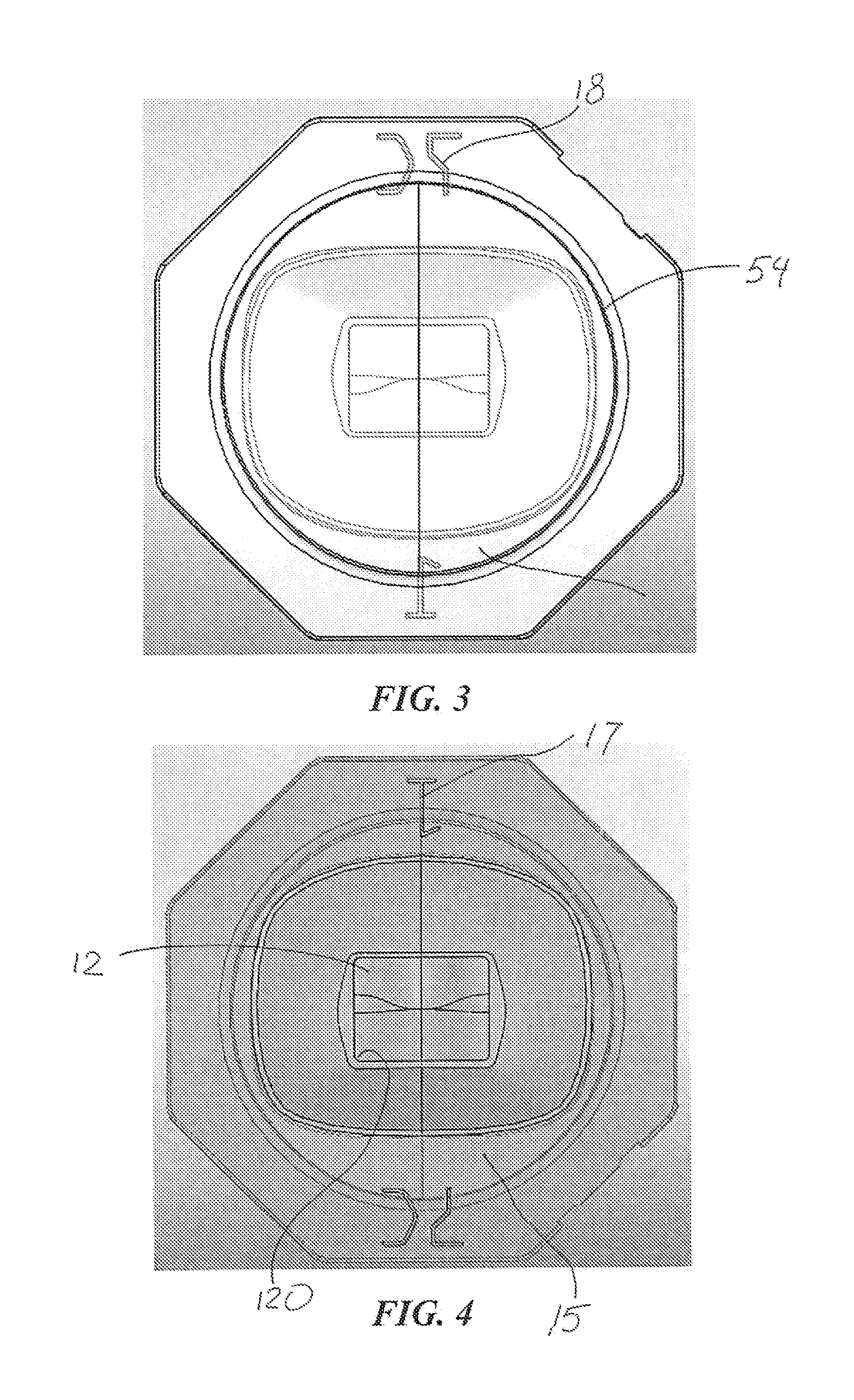Lens for Wide Lateral-Angle Distribution
a wide-angle, lateral-angle technology, applied in the field of light systems, can solve the problems of increased overall cost of led lighting using such lenses, inability to provide the light distribution required for proper illumination of wide target surfaces, and difficulty in manufacturing, so as to facilitate wide-angle distribution, facilitate uniform light distribution, and facilitate uniform light distribution
- Summary
- Abstract
- Description
- Claims
- Application Information
AI Technical Summary
Benefits of technology
Problems solved by technology
Method used
Image
Examples
Embodiment Construction
[0065]FIGS. 1-26 show aspects of an exemplary embodiment of a lens 10 in accordance with this invention. Lens 10 is configured for directing light from a light source 20 on a board and defining an axis 6. The light source may be an LED emitter which includes a single LED (or a closely-spaced group of LEDs) mounted either directly on the board or in the form of an LED package with the LED(s) on a submount on the board. A primary lens may be disposed over the LED(s). In such embodiments, lens 10 is a secondary lens placed over the primary lens as seen in FIGS. 17 and 19.
[0066]FIGS. 1-7, 15 and 17 illustrate lens 10 which includes a board-adjacent base 11 spaced from and around axis 6, an inner surface 30, an intermediate surface 40 and an outer output surface 50. As seen in FIGS. 17 and 19, outer output surface 50 is configured for refracting light received from inner surface 30 and intermediate surface 40. As best seen in FIGS. 2, 9, 15 and 16, base 11 forms an opening 12 into a ligh...
PUM
 Login to View More
Login to View More Abstract
Description
Claims
Application Information
 Login to View More
Login to View More - R&D
- Intellectual Property
- Life Sciences
- Materials
- Tech Scout
- Unparalleled Data Quality
- Higher Quality Content
- 60% Fewer Hallucinations
Browse by: Latest US Patents, China's latest patents, Technical Efficacy Thesaurus, Application Domain, Technology Topic, Popular Technical Reports.
© 2025 PatSnap. All rights reserved.Legal|Privacy policy|Modern Slavery Act Transparency Statement|Sitemap|About US| Contact US: help@patsnap.com



